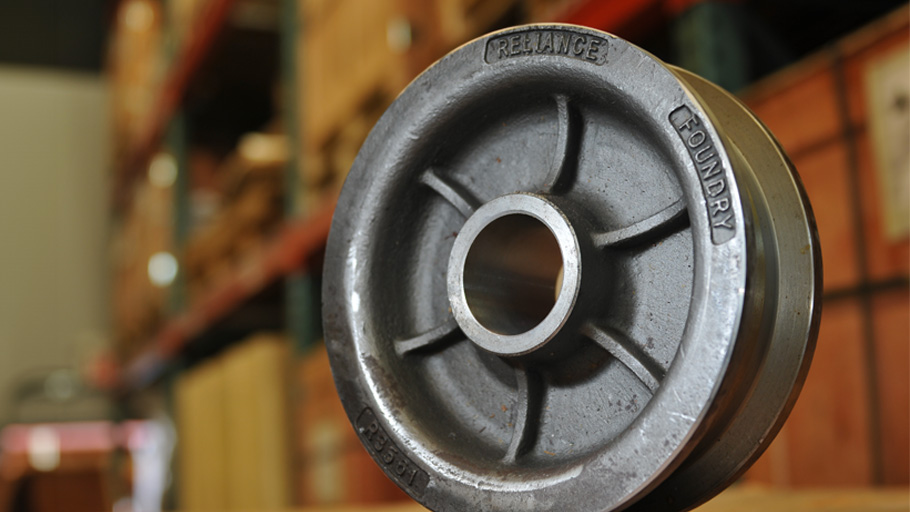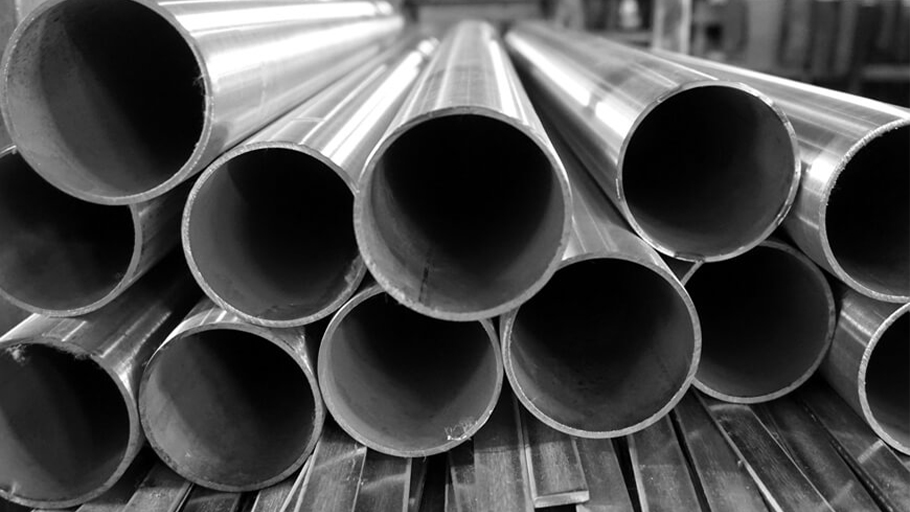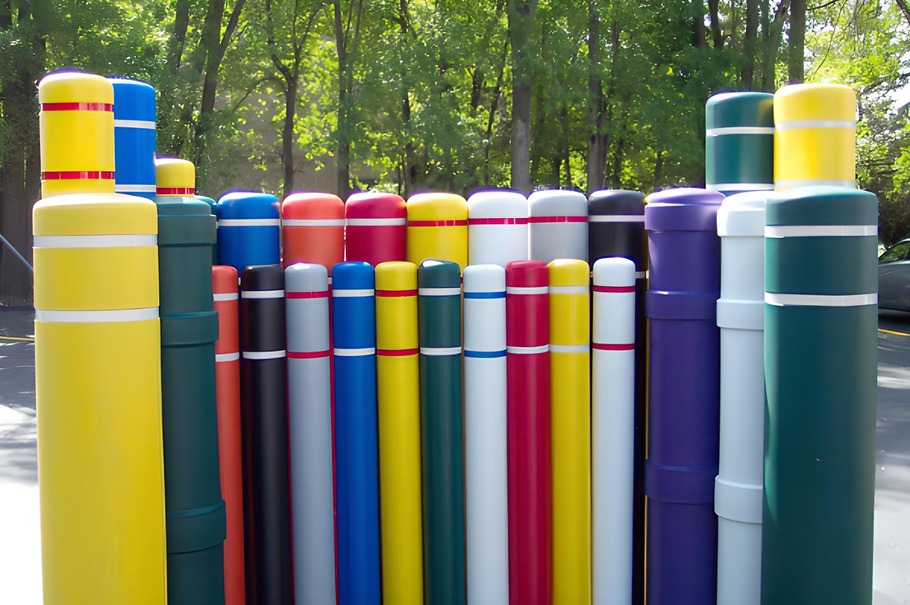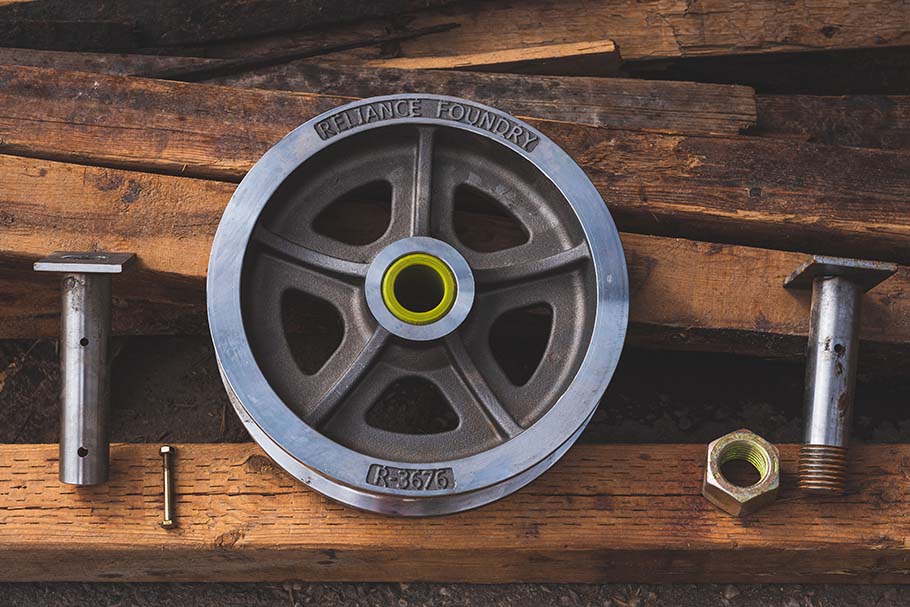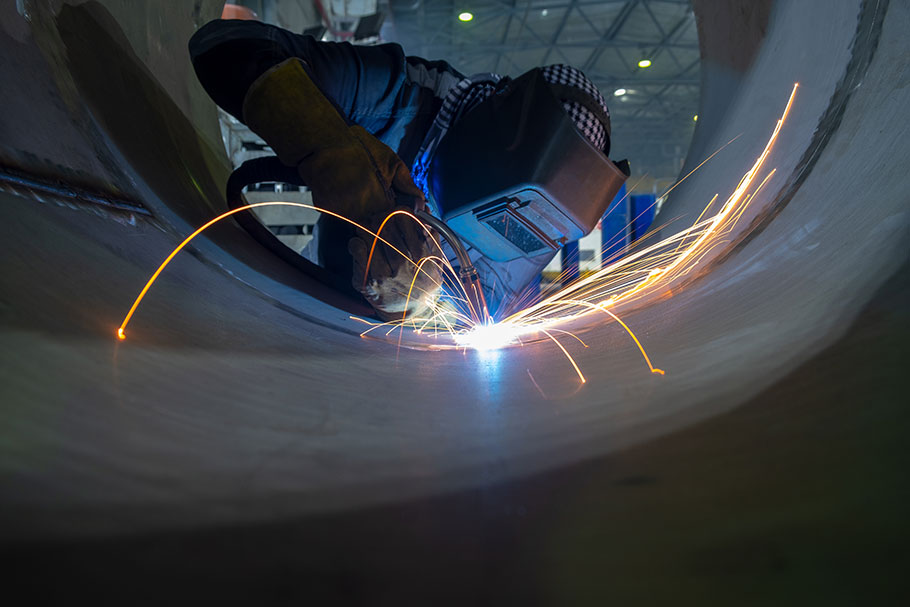Or are they the same?
Is carbon steel better than mild steel? Trick question! Mild steel is a type of carbon steel. The element carbon is present in all steel. Whenever this carbon is the main alloying element, the alloy is considered a carbon steel. “Low-carbon” steel is another name for mild steel. There are other carbons steels, of different carbon contents. Which one is better depends on the application the steel will be used for.
Over 1.5 billion tons of steel are produced every year to make products as diverse as sewing needles and structural beams for skyscrapers. Carbon steels are the most commonly used steel alloys, making up approximately 85% of all production in the US. The carbon content of the product is in the 0–2% range. This carbon affects the microstructure of the steel, giving it legendary strength and toughness. These alloys also contain small amounts of manganese, silicon, and copper. Mild steel is a commercial term for low carbon steel, where the carbon content is in the 0.04–0.3% range.
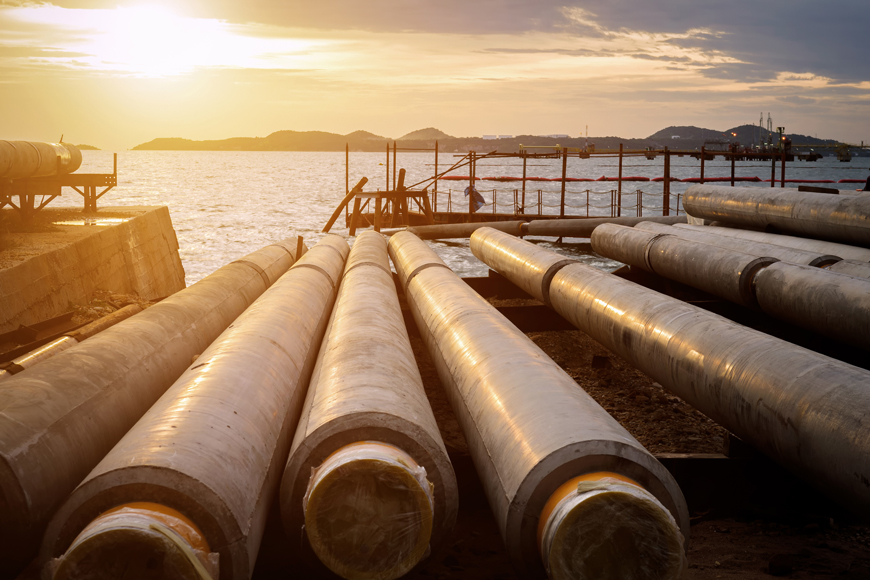
Carbon steel categories
Carbon steel can be categorized depending on the chemical composition and characteristics of the product. Mild steel also falls under the low carbon steel category as it is comprised of similar carbon content. Plain carbon steel is free from alloys and can be placed in four categories:

1. Low carbon steel or mild steel
Low carbon steel has 0.04–0.3% carbon content and is the most common grade of carbon steel. Mild steel is also considered low carbon steel as it is defined as having a low carbon content of 0.05–0.25%. Mild steel is ductile, highly formable, and can be used for automobile body parts, plates, and wire products. At the higher end of the low carbon content range, and with the addition of manganese of up to 1.5%, mechanical properties are suitable for stampings, forgings, seamless tubes, and boiler plates.
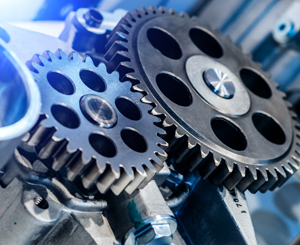
2. Medium carbon steel
Medium carbon steel has a carbon range of 0.31–0.6% and a manganese range of 0.6–1.65%. This steel can be heat treated and quenched to further adjust the microstructure and mechanical properties. Popular applications include shafts, axles, gears, rails, and railway wheels.
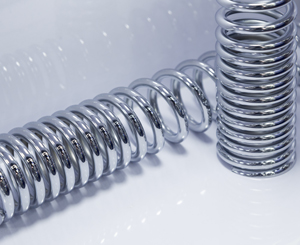
3. High carbon steel
High carbon steel has a carbon range of 0.6–1% with a 0.3–0.9% manganese content. Properties of high carbon steels make them suitable for use as springs and high-strength wires. These products cannot be welded unless a detailed program of heat treatment is included in the welding procedure. High carbon steel is used for edged tools, high-strength wires, and springs.
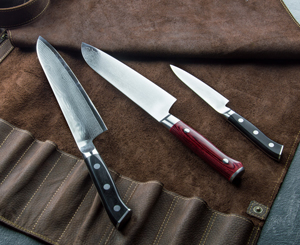
4. Ultra-high carbon steels
Ultra-high carbon steel has a carbon range of 1.25–2%, and are known as an experimental alloy. Tempering can produce a steel with a great hardness level, which is useful for applications like knives, axles, or punches.
Carbon steel manufacturing
Carbon steel and mild steel are manufactured in three stages:
- Primary steelmaking
- Secondary steelmaking
- Casting
These are followed by various finishing techniques that have a direct effect on the final product characteristics.

1. Primary steelmaking
Steel can either be made from 100% recycled material or from a combination of recycled material and virgin steel. Virgin steel is produced in a blast furnace from iron ore, coke (produced from coal), and lime. The raw materials are added to the top of the furnace, which operates at 3000°F. As the iron ore melts and mixes with the burning coke, carbon is released into the molten product. Impurities are absorbed by lime into a slag on the surface, which can be skimmed from the liquid steel. The product at this stage contains about 4% carbon and still has some impurities present. Molten virgin steel is transferred to the basic oxygen furnace (BOF), which already contains recycled scrap metal. Pure oxygen is blown through the liquid steel to oxidize the excess carbon, forming a finished product with up to 1.5% carbon content.
Recycled scrap steel can be reprocessed without the addition of virgin steel in an electric arc furnace. High-power electric arcs melt the metal at temperatures up to 3000°F. As the scrap steel melts, further batches of scrap can be added to the furnace up to its capacity. Once a flat bath of molten steel is achieved, oxygen is blown through in the same manner as the BOF. In both cases, molten steel is tapped from the furnace into ladles or steel baths for further processing, while the surface slag containing impurities is removed.
2. Secondary steelmaking
Market demands for higher-quality steel products and consistent properties have fueled the development of secondary steelmaking processes.
Electric arc furnace
Steel composition is altered in an electric arc furnace by adding or removing individual components or by manipulating the temperature.
- Stirring
Electromagnetic fields are used to induce turbulent currents in the ladle. This method easily separates non-metallic inclusions, which float to the surface, while ensuring a homogeneous mixture and composition of the steel. - Ladle furnace
The ladle acts as a secondary electrode furnace enabling precise temperature control and the measured injection of alloy components. - Ladle injection
Inert gas is injected into the bottom of the steel bath. As the gas heats up and rises through the molten steel, a stirring effect is achieved. - Degassing
Removes hydrogen, oxygen, and nitrogen, while also reducing the sulphur content of the product. Various techniques used to degas molten steel including vacuums, inert gas injection, and temperature control. - Composition adjustment (sealed argon bubbling with oxygen blowing – CAS-OB)
Stirring is achieved by injecting argon gas into the sealed steel bath. A snorkel arrangement prevents the slag from being disturbed while hydrogen content is reduced and oxide inclusions are floated to the surface. Oxygen is fed to the bath through a lance and aluminum is added through the snorkel giving an increased level of temperature control and accurate final composition.
Deoxidizing steel
A critical aspect of secondary steelmaking is the removal of oxygen. The presence of oxygen in molten steel as it begins to solidify results in a reaction with carbon to release carbon monoxide gas. Controlling deoxidation can be used to alter the characteristics of the finished product and therefore the suitability of the steel to be used for different applications.
- Rimming steels
Rimming steels are non-deoxidized or partially deoxidized steels. High levels of carbon monoxide are produced during solidification resulting in good surface quality but with the presence of many blow holes. - Capped steels
Capped steels follow the same pattern as rimming initially, but after about a minute, the mold is capped to suppress the formation of carbon monoxide. - Semi-killed steels
Semi-killed steels have been partially deoxidized prior to pouring into the mold and usually have carbon content in the range of 0.15–0.3%. - Killed steels
Killed steels have been fully deoxidized such that there is no formation of carbon monoxide at all during solidification. The finished product has a homogeneous structure and no blowholes. Aluminum is added into the ladle or mold as a primary deoxidizer to “kill” the formation of carbon monoxide; however, there are applications where the addition of aluminum to the finished product is undesirable. Alternatives to aluminum are ferroalloys of manganese and silicon or calcium silicide.
3. Casting
Traditional casting methods involve the lifting of the ladle by crane so that molten steel can be teemed into individual molds mounted on rail cars. Ingot molds are tapered slightly to facilitate removal of the ingots after solidification. Ingots are transferred to soaking pits where they are reheated for hot rolling.
Casting machines enable continuous casting of molten steel into shapes more suitable for downstream processing. Ladles are lifted to an elevated platform where they discharge the molten steel into a tundish, which feeds the casting machine. Molten steel is fed from the tundish into a water-cooled mold with a movable bottom plate. As the steel skin solidifies, the plate is slowly lowered allowing more molten steel to enter the mold. Steel is formed into slabs, blooms, or billets in a continuous casting machine. The solidified product is pulled by rollers before being straightened and cut at the end of the machine. This process can continue for days or weeks without interruption.
Carbon steel finishing
After the manufacturing process of carbon steel is complete, it is finished using rolling, heat treatment, surface treatment, or downstream secondary processing.

Product rolling
Solid cast ingots must be rolled into more useful shapes and sizes like those produced by continuous casting. Steel is compressed and pulled by rotating rolls. The rolls rotate at a faster pace than the steel as it enters the machine, therefore thrusting the steel forward and compressing it.
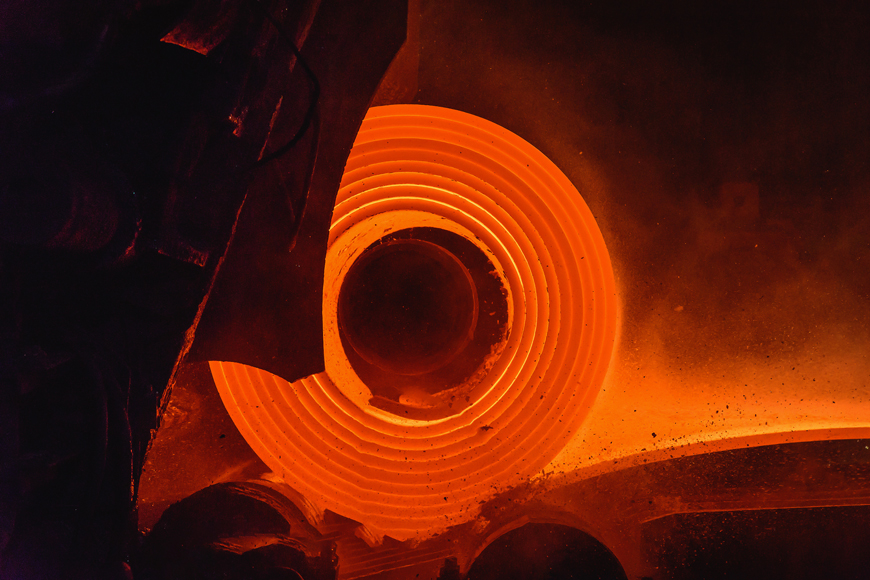
Hot forming
Steel is heated above the recrystallization temperature to break up the as-cast microstructure. This yields a more uniform grain size and even distribution of carbon within the steel.
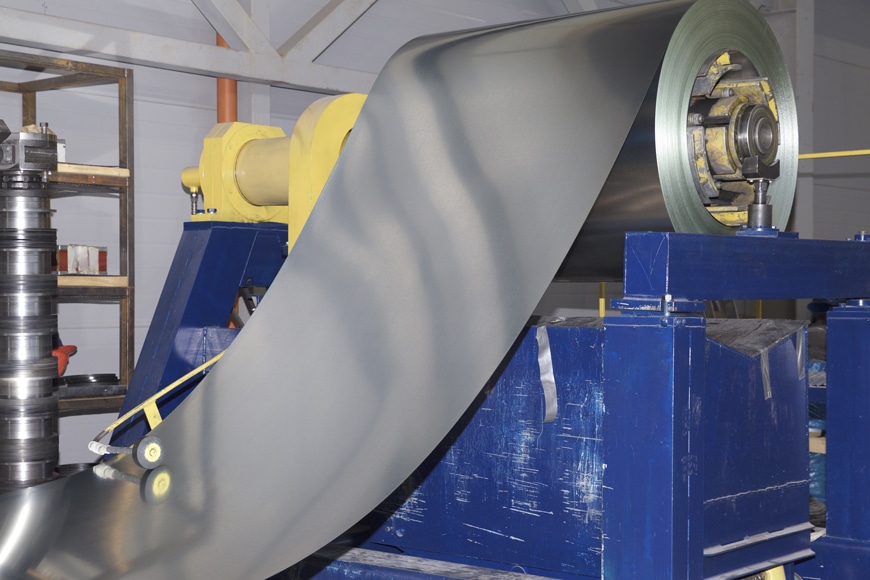
Cold forming
Cold forming is carried out below the recrystallization temperature. This process increases the strength through strain hardening by up to 20%, while improving the finish and allowing tighter tolerances. Steel emerges from the rolling process as semi-finished products in the form of blooms, billets, or slabs, depending on the final dimensions. A bloom is a very thick rectangular slab, a billet has a similar thickness but a narrower width, and a slab is a thinner and wider product.
Semi-finished products are further processed to intermediate products in a rolling mill to make them ready for manufacturing and final processing by downstream companies.
COLD FORMING PRODUCTS AND APPLICATIONS
PRODUCTS
APPLICATIONS
Blooms
Structural applications
Railings
Guard rails
Hand rails
Custom railings
Rolled bars
Machine building
Construction
Plates (thickness above 1/4 inch)
Heavy manufacturing
Boilers
Bridges
Industrial vessels
Tanks
Ships
Sheets (thickness below 1/4 inch)
Car bodies
Household appliances
Office equipment
Beverage cans
Round/square rods
Construction frameworks
Braces
Shafts
Axles
Once steel leaves the rolling mill, downstream companies use different secondary processing techniques to prevent corrosion and improve the properties of the metal. The predominant technique to do this is heat treatment.
Heat treating
The purpose of heat treating steel is to manipulate its mechanical properties by changing the distribution of carbon in the product and the internal microstructure. When manipulating the mechanical properties of steel, an increase in ductility results in a reduction of hardness and strength and vice versa.
Normalizing
Steel is heated to a temperature approximately 130°F above the upper critical temperature. The temperature is held until the entire product is uniformly heated, after which it is air-cooled. This is the most common form of heat treatment and gives steel high strength and hardness.
Annealing
The temperature of steel is raised into the solid solution state for one hour before cooling at a rate of 70°F per hour. A soft and ductile steel results with no internal stresses.
Quenching
A similar process to normalizing, but cooling is accelerated by quenching the steel in water, brine, or oil. The resulting product is very hard—up to four times harder than normalized steel—but very brittle, making it susceptible to breaking and cracking. For this reason, quenching to a predetermined temperature is normally followed by a controlled cooling rate down to room temperature in a process called tempering or stress relieving. By designing the temperature and cooling rate parameters during heat treatment, the properties of steel can be precisely controlled.
Surface treating
Approximately one third of steel produced is treated with a surface coating to inhibit corrosion, improve weldability, and paintability.
Hot dip galvanizing
Galvanizing is a process of applying a zinc surface coat to steel. The steel is heated before entering a zinc bath, where liquid zinc layers the surface of the product. The thickness of the coating is controlled with gas-knives. To prevent the zinc coating from cracking, a small amount of aluminum is added to the zinc solution.

Electrolytic galvanizing
Another process for applying a zinc coat to steel products is through electrolytic galvanizing. Zinc is deposited onto the surface of the steel by controlling the current in an electrolyte solution. This technique allows for better control of the coating thickness. It can also be used to apply differential coatings with different thicknesses on either side of a product, or zinc alloy coatings to optimize the desired characteristics.
Downstream secondary processing
Downstream companies further process their steel raw materials into finished products. Different processing techniques are used such as machining, which involves uniformly removing surface metal with machine tools. Joining steel is also common and uses various welding techniques.
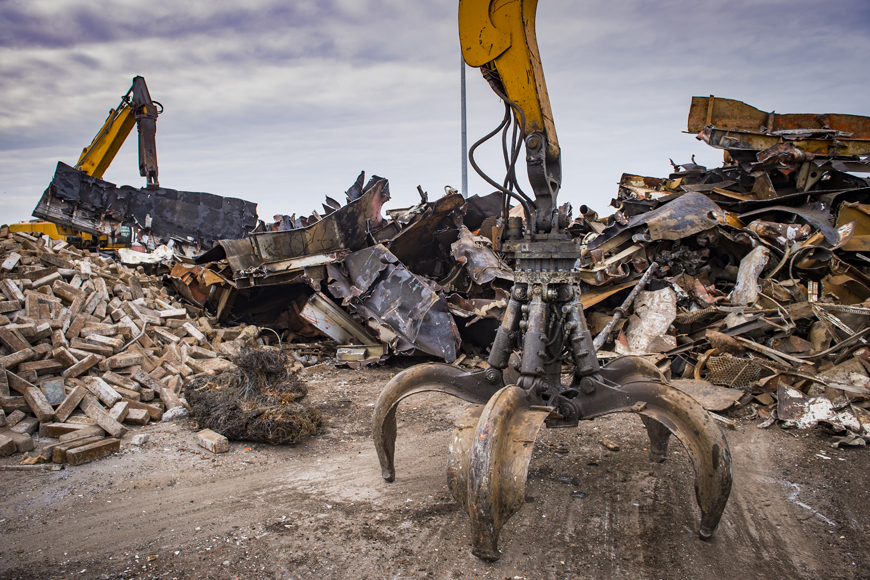
Recycling carbon steel
Metal recycling is one of the success stories of sustainable living and minimizing the impact of human activities on the environment. Steel is the most recycled material on the planet, more than all other materials combined.
Sources for recycled steel include scrap from steel mills, secondary manufacturers, and steel products at the end of their product life cycle. There is often not enough recycled steel to meet the manufacturing demand so there is almost always a combination of virgin and recycled steel in the production of finished products.
Recycling steel is also economical as it brings down the cost of finished products. For this reason, the steel industry has been actively involved in promoting and establishing recycling networks to make it easy for end of life products to be recycled.
For more information on steel, or to request a quote for a custom project, please contact us.
Related Articles:
- Steel Pipe: An Introduction
- Steel Grading
- A Complete Guide to Stainless Steel
- Carbon Steel vs. Stainless Steel
- Hot vs Cold Rolled Steel



